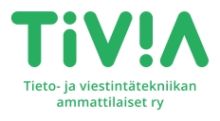Reaching automation excellence with Dave Moss

![]() Following our RPA seminar on processes and information systems development last month, we sat down with the keynote speaker Dave Moss, co-founder and Chief Technology Officer at Blue Prism. Elaborating on issues discussed at the event, Moss shared his expertise, and vision for the future of work.
Following our RPA seminar on processes and information systems development last month, we sat down with the keynote speaker Dave Moss, co-founder and Chief Technology Officer at Blue Prism. Elaborating on issues discussed at the event, Moss shared his expertise, and vision for the future of work.
A: For most businesses, the work best suited for automation are the back-office clerical tasks that are tedious, rules-based, often manual and repetitive in nature. These are “swivel chair” processes, and are susceptible to human error that stands in the way of efficient, effective delivery of products and services. More importantly, employees can be freed up to contribute higher value work to the organization.
The first step of any automation project is to ensure that both IT and business operations are invested and involved in it from the start and that they work together to create a strategy and plan for the ongoing automation program. Too often, organisations start with a flurry of automation activity only to later discover that discrepancies between what the business needs and what degree of governance IT require lead to the two sides becoming misaligned. Mission-critical operations in highly regulated industries require IT to ensure that all solutions comply with strict security, governance and resilience criteria. IT and the different functions should work together to identify a pipeline of processes with a strong business case (for RPA) and agree on the governance platform at the outset. This will underwrite a much more successful project with longevity and resilience built in.
A: While many people believe automation eliminates jobs, in my experience, it’s simply not the case. Rather than remove resources, automation reallocates them – putting human and technological capital to its best use within the organization. By automating the repetitive, mundane work, employees have more time to do the strategic, creative and customer-facing work that they’re better suited for.
Since the Industrial Revolution, we’ve discovered and invented ways to make our work faster, less intensive, more safe and, ideally, more enjoyable. Enterprise automation and the optimization of process work via technologies like artificial intelligence and robotic process automation (RPA) is just the latest phase in this evolution. In the end, if companies are using automation strategically, employees should benefit. This means using automation tools to automate very repetitive and boring work, increasing productivity, customer service and quality and freeing up the time for internal staff to work on tasks that are more varied, complex, and interesting. Rather than eliminating jobs, automation transforms them.
A: The best advice I could offer organizations launching an automation project is to understand both the business and cultural imperatives required to be successful. Of course this begins with the understanding that business operations and IT must be working together, but more broadly, it should be the commonly held belief that automation is not a “silver bullet.” It will require significant time and effort invested by both sides, so early buy-in is key if the desired outcome is organization-wide transformation.
One way to do this is by developing an automation strategy that sets the direction for the entire project – aligning expectations and tying back to a single common vision. Collaborating and agreeing on a few priority deployments at the outset can help alleviate these issues, and work towards developing a project roadmap that will carry the organization from current state to desired outcome with a smooth transition.
A: The key to properly manage automation is to make sure that you’ve established strong standards and best practices. You can use the first batch of automated processes to establish the ideal methodology, and leverage it as a foundation for subsequent process deliveries. Establishing a tailored, centralized model that aligns with the organization’s business goals and structure will ensure that the automation program meets its ROI goals. The organization gains experience in training and managing the digital workforce, creating an internal center of excellence that can help ensure quality across the board and apply automation in new, innovative ways throughout the organization.
A: Automation is redefining the way we live and work. Organizations of all sizes and scopes are making it a critical part of their business strategies, and I don’t see that slowing down. The evolution of automation technologies and humans’ roles in workplace will take place in tandem. It will be the responsibility of senior leaders to understand, educate and engage both their human and robotic workforces to work together to achieve business success.
Photo Tori Pal license CC BY 2.0














































